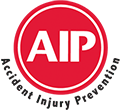Overhead crane has a wide application over many industries when the hoisting or moving of large or heavy items in required. The term overhead crane may include the following lifting devices such as: hoists, jib cranes, gantry cranes, monorails, top running and under slug cranes.

An overhead crane, commonly called a bridge crane, is a type of crane commonly found in most industrial environments. Overhead crane has a wide application over many industries when the hoisting or moving of large or heavy items in required.
The term overhead crane may include the following lifting devices such as: hoists, jib cranes, gantry cranes, monorails, top running and under slug cranes.
Overhead cranes are designed to assist with moving large and heavy objects from point a to point b. Proper training is required to prevent crane accidents that can lead to the loss of product, injury and death.
Crane incidents can involve shifting / dropping loads, contact with structure, rigging failure and catastrophic failure. This course is recommended based on the rated load capacity of a less than 2000 kg crane.
AIP Safety offers 3 Overhead Crane Operator Training courses in Calgary, AB: 4 Hour, 8 Hour and 12 Hour.
Course Objectives:
Legislation and regulations as well as company specific safe work procedures
Responsibilities of the owner, supervisor and worker
Crane Safety
Basic Principles: Overhead Crane Design/Operation
Consequences of improper use of a crane
The function of different kinds of cranes and lifting devices
The lifting capacity of the cranes
Crane load limits
Using different kinds of slings, rigging methods, and the effect of sling angle
Safe lifting practices (lifting, moving, and placing loads) turning Loads (if required)
Maintaining a safe distance
Hand Signals (if required)
Proper use of controls (pendent, radio, and cab)
Understanding lifting attachments
Pre-shift inspections of the crane and slings
Written and practical tests including Safe Operating
The provision of appropriate health and safety training is an integral part of all health and safety programs and is a key component of due diligence in the workplace. Employers have an obligation.
To properly train their employees and supervisors to ensure that they are competent to perform their jobs, recognize the hazards of the job and understand how to protect themselves from these hazards.
© 2025 coursetakers.com All Rights Reserved. Terms and Conditions of use | Privacy Policy